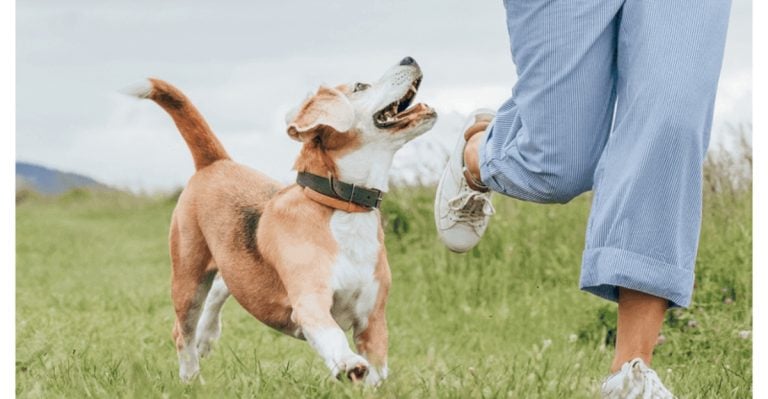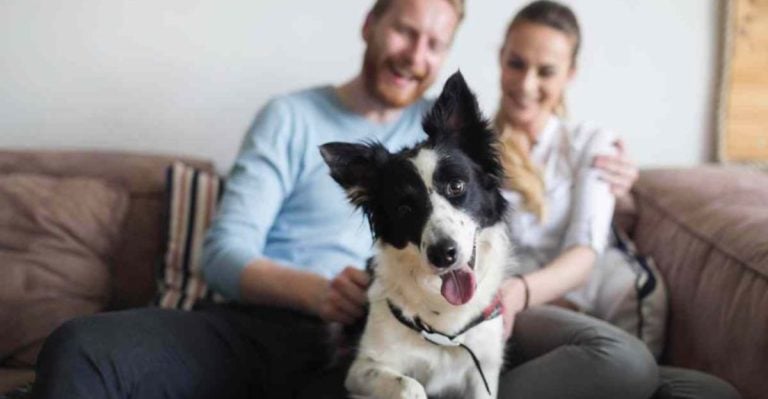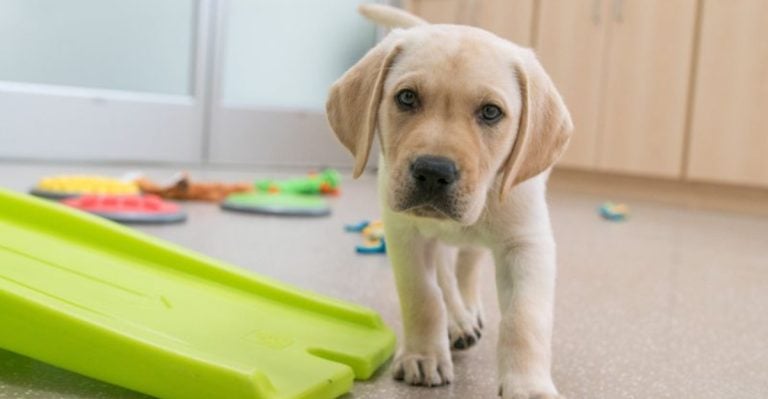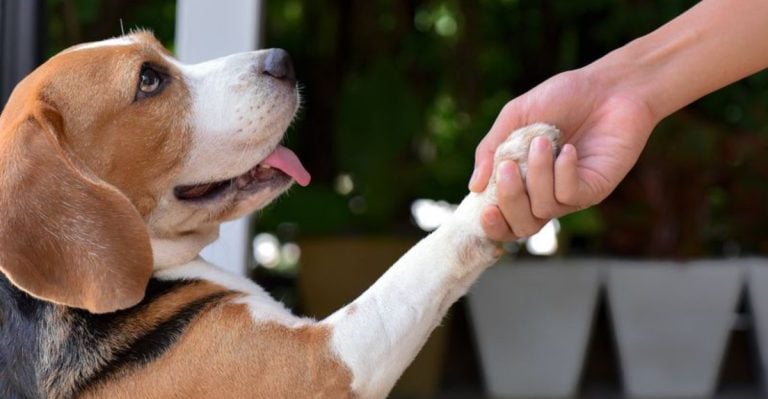13 Things Your Rescue Dog Feels (But Can’t Tell You Out Loud)
Bringing a rescue dog home opens a new chapter of love, trust, and healing. Behind those soulful eyes lies a complex world of emotions shaped by past experiences that your furry friend can’t express with words. Understanding these unspoken feelings helps build the bridge of trust your rescue dog needs to fully bloom in their forever home.
Unlike puppies who grow up in stable environments, rescued dogs often carry emotional baggage—from fear and confusion to deep longing for safety. The transition into a new home, no matter how loving, can be overwhelming at first. You may notice surprising behaviors: hiding under the couch, jumping at harmless sounds, or clinging to you like a lifeline. These reactions aren’t signs of a “bad dog”—they’re part of the healing process.
Every tail wag, cautious glance, and tentative cuddle is a clue to what your dog has been through—and how far they’ve come. The more you understand their emotional journey, the better you can support them as they learn to trust again. Whether you’re a first-time adopter or seasoned dog lover, knowing what to expect emotionally can make all the difference in helping your new companion feel truly at home.
Here are 13 emotional reactions commonly seen in rescued dogs—some may surprise you, others will tug at your heart. But all are part of the beautiful, messy, and rewarding process of giving a deserving dog a second chance.
1. Lingering Shadows of Fear and Anxiety
Your rescue pup’s trembling isn’t just from the cold. Past traumas create invisible monsters that follow them into their new life with you. Sometimes it’s the raised hand that makes them cower, other times it’s the sudden noise that sends them scrambling under furniture.
These reactions aren’t personal—they’re protective mechanisms developed through difficult experiences. Your patience becomes their safety net. Each gentle interaction slowly rewrites their expectation of what human contact means.
Establishing predictable routines helps tremendously. When mealtimes, walks, and bedtimes follow a pattern, your nervous companion gains confidence in knowing what comes next in a world that once felt chaotic and threatening.
2. The Wall of Distrust That Needs Patient Dismantling
Every rescue dog carries an invisible shield built from broken promises and disappointments. Your new companion may watch you suspiciously, questioning every kind gesture and wondering when the other shoe will drop.
This wariness manifests in subtle ways—maintaining distance, flinching at sudden movements, or guarding resources. Breaking through requires consistency above all else. When you say you’ll feed them, you do.
When you promise a walk, you follow through. Each fulfilled promise lays a brick in the foundation of trust. Respect their personal space as this wall slowly crumbles. Some days progress seems remarkable; other days old suspicions resurface. Remember that trust isn’t built in straight lines but in a meandering path forward.
3. The Heartache of Separation Anxiety
Your bathroom door has an audience—those paws visible underneath follow you everywhere for good reason. Abandonment has shaped your rescue’s reality, making every goodbye feel potentially permanent.
The destroyed cushions, accidents on the floor, or neighborhood-waking howls while you’re gone aren’t misbehavior—they’re panic attacks. Your rescue experiences genuine distress when separated from their newfound safety source: you.
Their brain floods with stress hormones the moment you reach for your keys or put on shoes. Gradual desensitization helps heal this wound. Practice brief departures, returning before anxiety peaks.
Leave items carrying your scent nearby. Each successful separation builds confidence that yes, you really will come back every time.
4. Silent Battles with Depression and Withdrawal
Sometimes your rescue’s quiet demeanor isn’t peaceful contentment—it’s emotional shutdown. The dog who spends hours staring at walls, shows little interest in toys, or sleeps excessively may be experiencing canine depression.
Their past has taught them to disconnect as a survival mechanism. These withdrawn behaviors often puzzle new owners expecting immediate joy. Your rescue might seem ungrateful or aloof when they’re actually processing complex emotions without human language to express them.
Gentle engagement helps without overwhelming. Short, positive interactions followed by space create safety. Celebrate small victories like a brief tail wag or momentary eye contact.
Recovery from emotional withdrawal happens gradually, with each positive experience building neural pathways toward joy.
5. The Overwhelming Rush of Overexcitement
That jumping, spinning tornado of fur isn’t just poor manners—it’s your rescue’s emotional regulation system misfiring. Dogs from institutional settings or neglectful homes often never learned appropriate excitement boundaries.
Everything wonderful feels SO wonderful they simply can’t contain themselves! Their overexcitement stems from sensory deprivation or inconsistent access to good things.
The simple pleasures you take for granted—walks, treats, attention—might have been rare treasures in their previous life, triggering an emotional overflow when finally available.
Calm, consistent responses help recalibrate their emotional thermostat. Rewarding settled behavior and removing attention during overexcitement gradually teaches them that good things remain accessible without the drama.
Their happiness doesn’t need to reach fever pitch to ensure the joy continues.
6. The Fog of Confusion in New Surroundings
Your rescue dog’s blank stare at the stairs might not be stubbornness—it could be genuine confusion. Many rescue dogs have never encountered common household features like slippery floors, stairs, or even doorbells.
Their puzzled expression reveals a mind trying to categorize unfamiliar experiences without a reference point. House-training accidents often stem from this same confusion. A dog who lived outdoors might not understand the concept of designated bathroom areas.
One who lived in a cage might not know how to signal bathroom needs. Patience during this learning curve is crucial. Break new experiences into smaller steps with plenty of encouragement. Watch for subtle signs of confusion—hesitation, freezing, or avoidance behaviors—and provide gentle guidance without frustration. Their cognitive map expands with each successful navigation.
7. The Fierce Instinct of Protectiveness
That surprising bark when the delivery person approaches isn’t aggression—it’s your rescue declaring “I’ll defend this place that defends me.” Many rescue dogs develop powerful protective instincts toward the humans who saved them, sometimes disproportionate to actual threats.
This behavior often emerges after the initial adjustment period when they’ve claimed you as their person. The dog who once cowered now positions themselves between you and perceived dangers. Their alertness to strangers or unusual sounds stems from a profound commitment to your safety.
Channel this protective instinct positively through training rather than punishing it. Teach appropriate alert behaviors and calm responses to normal visitors. Their desire to protect you is ultimately an expression of their deepest attachment and gratitude for the security you provide.
8. The Overwhelming Wave of Gratitude and Affection
Those soulful gazes aren’t just about treats—they’re wordless thank-yous from a grateful heart. Rescue dogs often display extraordinary affection, whether through gentle paw touches, leaning against you, or those famous “rescue dog eyes” that seem to see right through you.
Many rescues experience a moment of realization that they’re truly home. It might come after weeks or months, appearing as a subtle shift in how they seek connection. The hesitant dog who once avoided touch now initiates contact, treasuring simple moments of togetherness.
This profound gratitude often manifests in unwavering attentiveness—following you room to room, checking on you during the night, or simply maintaining visual contact. They’re not just being clingy; they’re expressing the deepest appreciation their canine hearts can offer.
9. The Careful Dance of Testing Boundaries
When your well-behaved rescue suddenly snatches food from the counter or ignores a command they’ve mastered, they’re not regressing—they’re testing the consistency of their new world.
This boundary-testing behavior typically emerges once basic security needs are met and they feel safe enough to explore the rules. It’s actually a positive sign of growing confidence. They’re essentially asking: “Are the rules consistent here? What happens if I push back? Will I still be loved?”
Their previous environments may have had unpredictable or harsh consequences for normal dog behaviors. Respond with calm, consistent reinforcement of boundaries rather than taking it personally.
Each predictable, fair response builds their understanding that this home has dependable, reasonable expectations—unlike the chaos or cruelty they may have previously experienced.
10. The Rediscovery of Pure Joy and Playfulness
The first time your serious rescue dog does a play bow or zooms around the yard with abandon marks a magical milestone. Many rescues have forgotten—or never experienced—the simple joy of being a dog.
Their initial stoicism often masks an uncertainty about whether play is allowed or safe. Each playful moment represents healing in action. The dog who cautiously mouths a toy, then suddenly tosses it in the air and pounces is rediscovering their authentic doggy nature.
These breakthrough moments might bring tears to your eyes—they’re witnessing their true self emerge from the shadows. Support this rediscovery with varied play opportunities without pressure.
Some rescues prefer gentle games like hide-and-seek, while others eventually embrace rougher play once they understand the safety of boundaries. Each joyful interaction rewrites their understanding of what life can offer.
11. The Lingering Echo of Startle Responses
Your rescue’s dramatic reaction to the dropped pan isn’t an overreaction to them—it’s their nervous system responding to past dangers. Heightened startle responses reveal nervous systems wired for survival rather than relaxation.
The dog who jumps at slight sounds or movements is experiencing the world through a trauma filter. This hypervigilance developed as a protective mechanism in environments where threats could appear without warning.
Their exaggerated responses to ordinary stimuli—flinching at hand movements or bolting at sudden noises—reflect a brain prepared for danger rather than safety. Creating predictability helps rewire these responses.
Announce movements before making them, maintain consistent household sounds, and respect their need for quiet retreats. Each uneventful exposure to previously triggering stimuli gradually recalibrates their threat detection system toward appropriate responses.
12. The Unshakable Bond of Loyalty and Devotion
The depth of a rescue dog’s loyalty often surprises even experienced dog owners. Once they’ve committed their heart to you, that devotion becomes their north star. Many rescues form attachments more profound than dogs who haven’t experienced loss, perhaps because they truly understand the alternative to loving care.
Their loyalty appears in countless small gestures—checking on you when you’re sick, positioning themselves between you and strangers, or simply maintaining visual contact across a room.
They’ve chosen you as their person, often with a deliberateness that puppies raised in security don’t display. This extraordinary devotion isn’t obligation but choice. They’ve assessed your character through daily interactions and deemed you worthy of their complete trust.
The rescue who once had every reason to distrust humans now places their whole heart in your hands.
13. The Beautiful Journey of Healing and Growth
Your rescue’s transformation unfolds in quiet moments you might almost miss—the first time they sleep deeply without twitching, their willingness to turn their back to you (showing trust), or their newfound confidence with strangers.
These subtle shifts reveal profound internal healing happening beneath the surface. The timeline varies dramatically between individuals. Some rescues blossom within weeks, while others need years to fully overcome past traumas.
Progress rarely follows a straight line—expect plateaus and occasional backsliding during stressful periods. Celebrate each milestone, no matter how small. The dog who now accepts treats from your hand, sleeps through thunderstorms, or approaches new dogs with curiosity instead of fear is showing you their resilience.
Their capacity for healing despite difficult beginnings reflects the remarkable adaptability of the canine spirit.



















